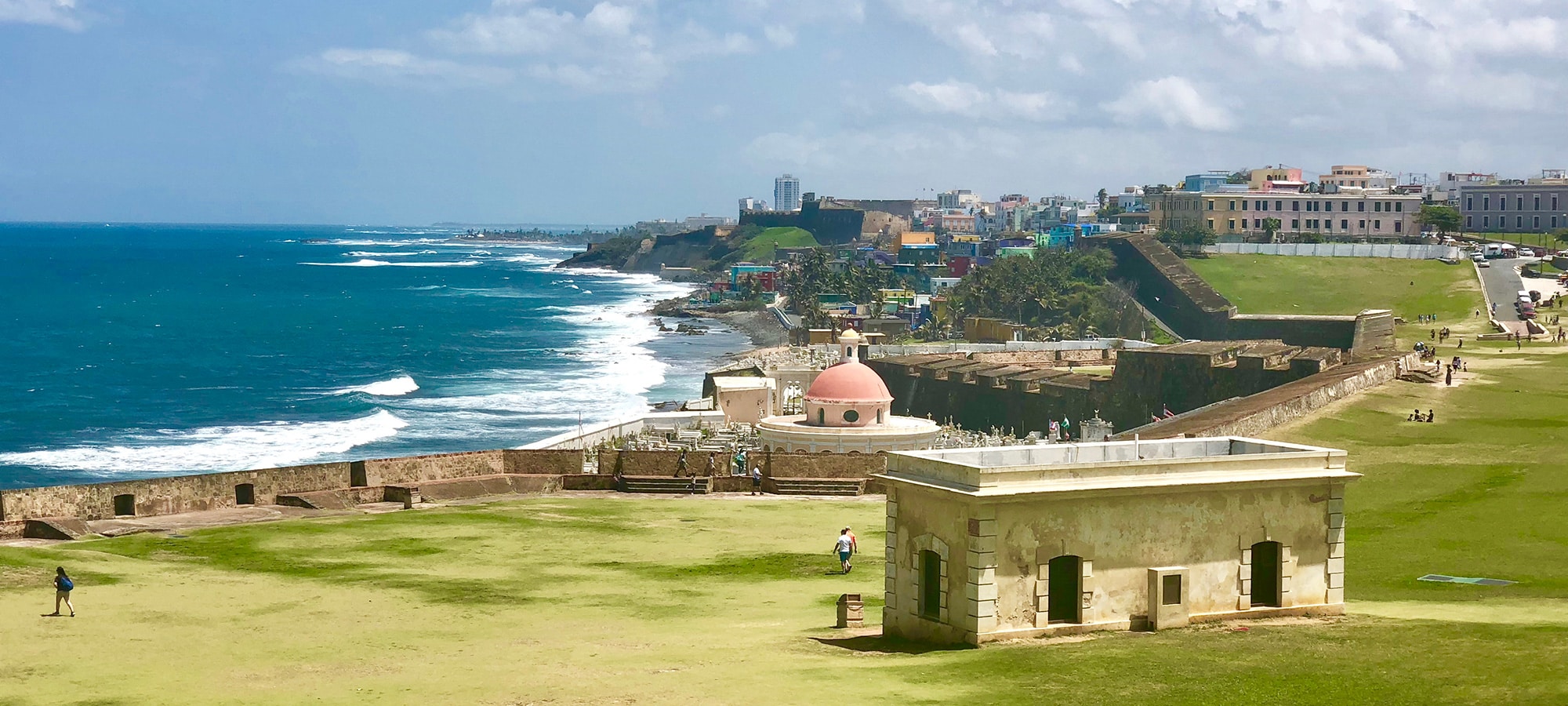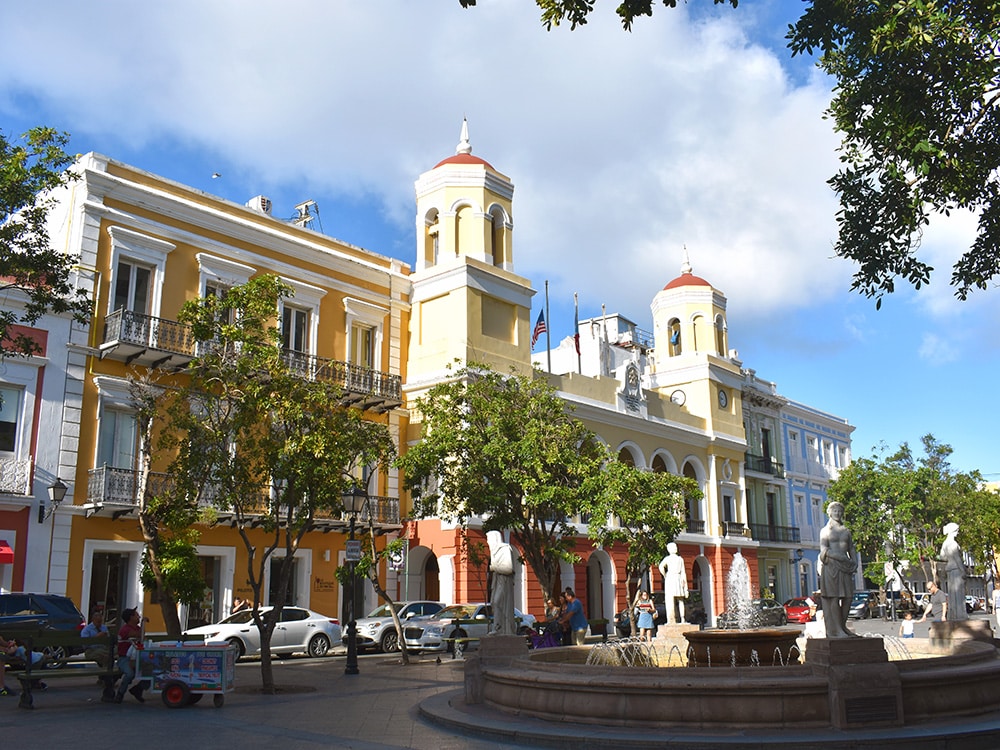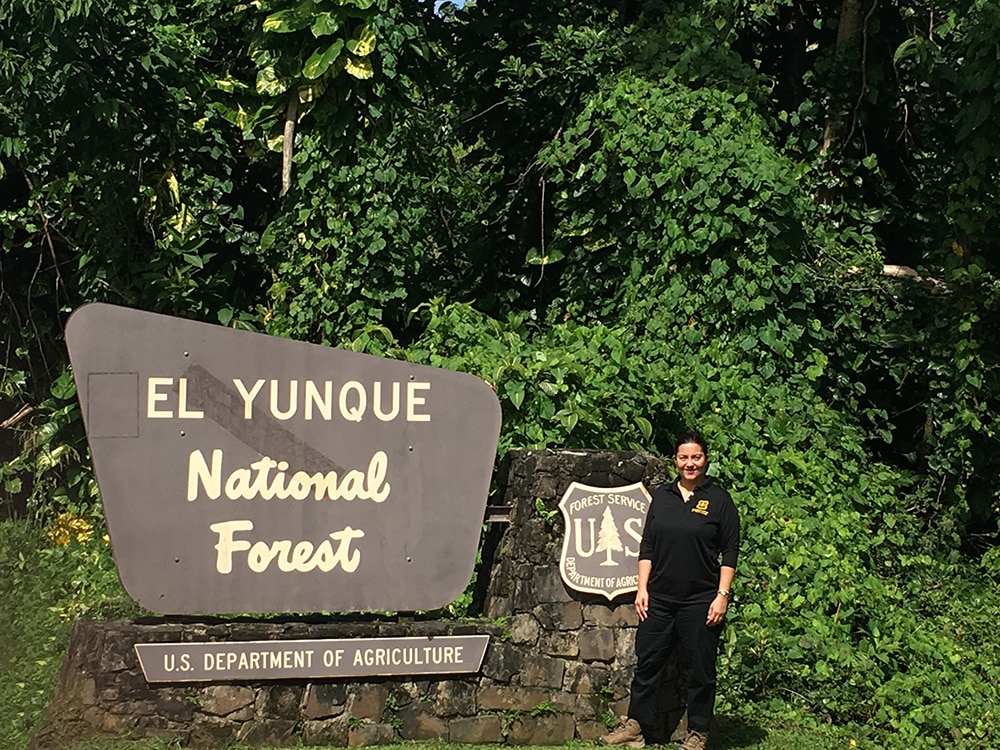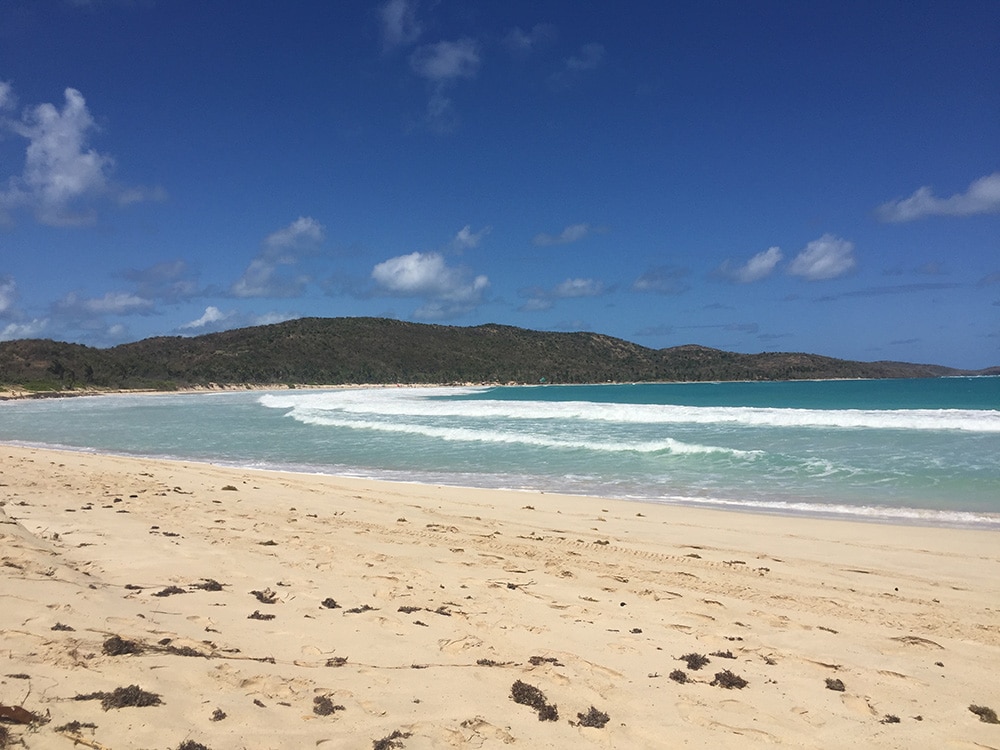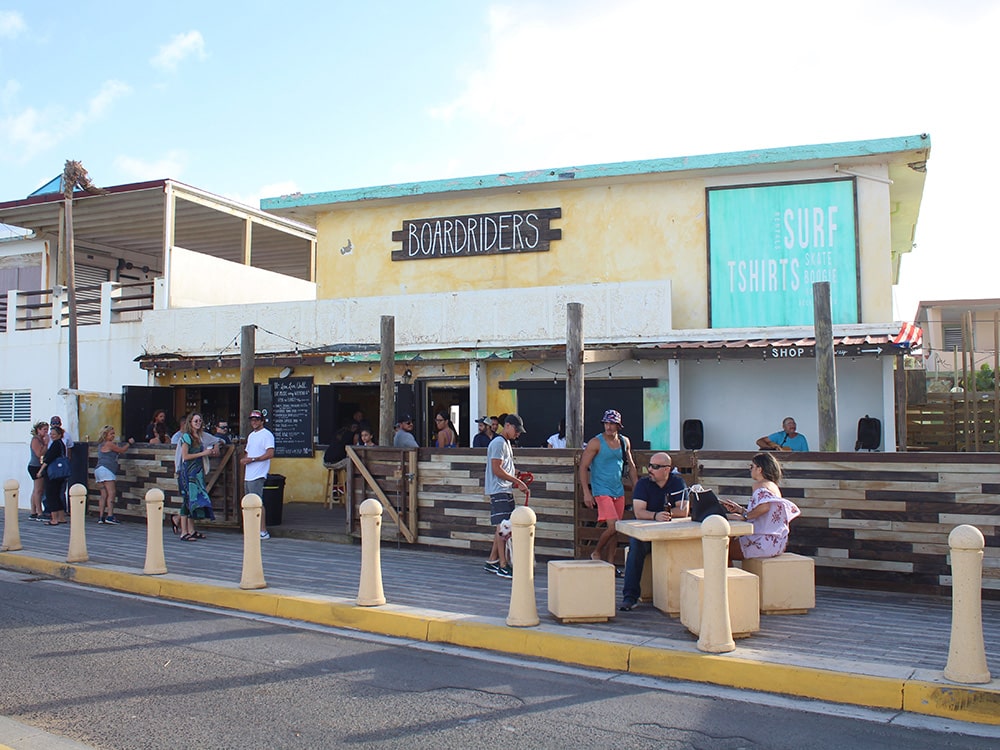8 Things To Know About Visiting Puerto Rico After Hurricane Maria
We recently traveled to Puerto Rico to see how the island is recovering from last year’s hurricanes. Here’s what we learned.
In typical years, Puerto Rico is an easy getaway for U.S. tourists thanks many direct flights from major cities and the fact that no passport is required to visit. But Hurricanes Irma and Maria left three-quarters of residents without power and destroyed numerous hotels and restaurants, hurting the tourism industry, which contributes $4 billion dollars to the economy each year.On a recent visit, the island seemed to be operating usual as far as tourists are concerned. Sunny blue skies over San Juan shone down on vibrant green fields around Castillo San Cristobal, where visitors took selfies and ate shaved ice. Hotels around the city were booked and restaurants were buzzing — someone who hadn't watched the news last fall might never have guessed a category 5 hurricane hit the island five months ago.Outside of San Juan reality was more sobering. Popular islands Vieques and Culebra were practically empty and many restaurants were shuttered. The eateries and hotels that were open were running on generators (as was much of San Juan). Some areas of El Yunque National Forest were open, though many areas were closed. Roads and street lights across the island were still under repair.Yet, this is exactly why you should visit."Restaurants cannot open without visitors, but visitors will not come without restaurants," said Denisse De Leon of Jak Water Sports in Vieques.There are enough places open to have an enjoyable stay wherever you go in Puerto Rico, and visiting the best way to help. Here's what you need to know before you go.
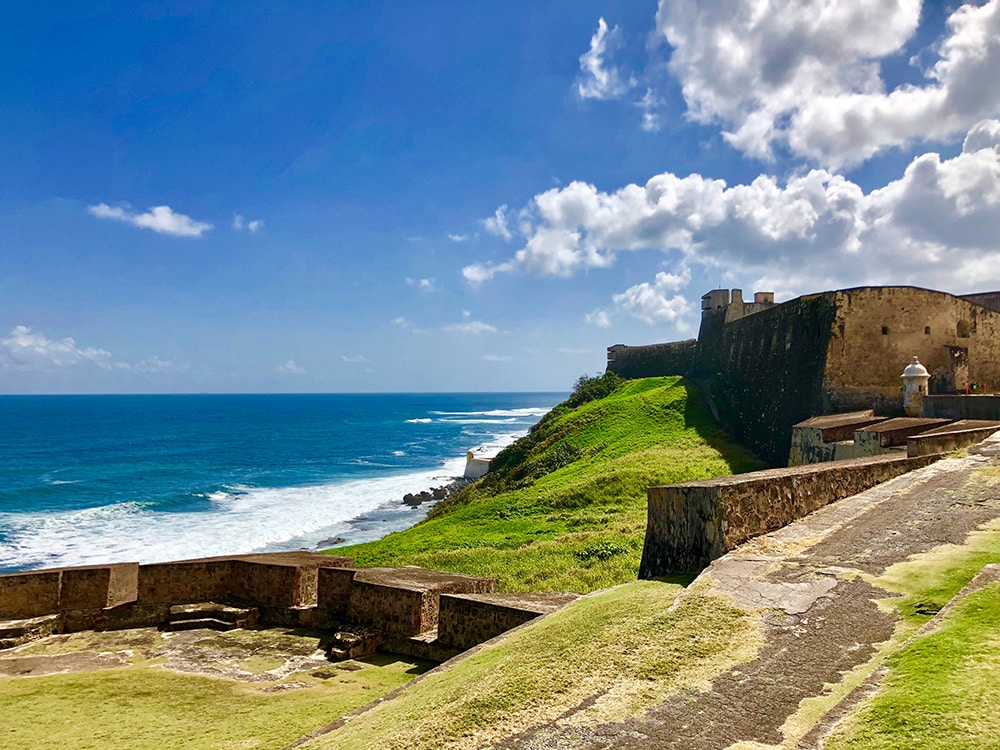
1. Visiting is the Best Thing You Can Do
Before leaving for Puerto Rico, a few friends asked if visiting was insensitive. They thought having tourists around might put extra burden on people trying to rebuild. Actually, it's the opposite. Without tourism dollars, hotels, restaurants, and other businesses — especially those that are smaller — cannot afford to rebuild.
"The best way to support is to actually visit us," says Carla Campos, Acting Executive Director for the Puerto Rico Tourism Company. "Tourism is vital for the island's economy so we're encouraging people to come and stay at our hotels, explore our local restaurants, and shop at our stores."
2. Don't Expect San Juan to Feel Desperate for Visitors
In late February 2018, staying in San Juan felt no different than months before the hurricanes. All attractions and museums were open, restaurants were operating as usual, and many hotels were at capacity. The only area where damage was visible was on the walking trail along the perimeter of the city, and even this was minor — a few small trees down and a bit of debris not yet cleared.
3. Venturing Out of Old San Juan Is Worth the Uber Fare
While Old San Juan's picturesque streets and multiple forts draw 3.7 million tourists per year, there's much to be seen outside of the old city, too. The Santurce neighborhood is where locals hangout on weekends, specifically at the Plaza de Mercado. Here, from Thursday through Saturday nights you'll find crowds of young people drinking and dancing late into the night.
At restaurants like La Cueva del Mar (which was recommended by every person I spoke to in San Juan and definitely lived up to the hype), you'll get a feel for what life in San Juan is actually like for residents, and probably find yourself in some candid conversations about hurricane relief efforts.
Very few locals live in the old city, but those in Santurce were happy to talk about hurricanes past and how they've differed, as well as vent their frustration about current relief funding.
Pinky's, a breakfast spot for smoothies and huge stacks of pancakes, is a favorite among the Army Corps of Engineers, their presence a reminder that though San Juan is operating like normal on the surface, there's still work to be done.
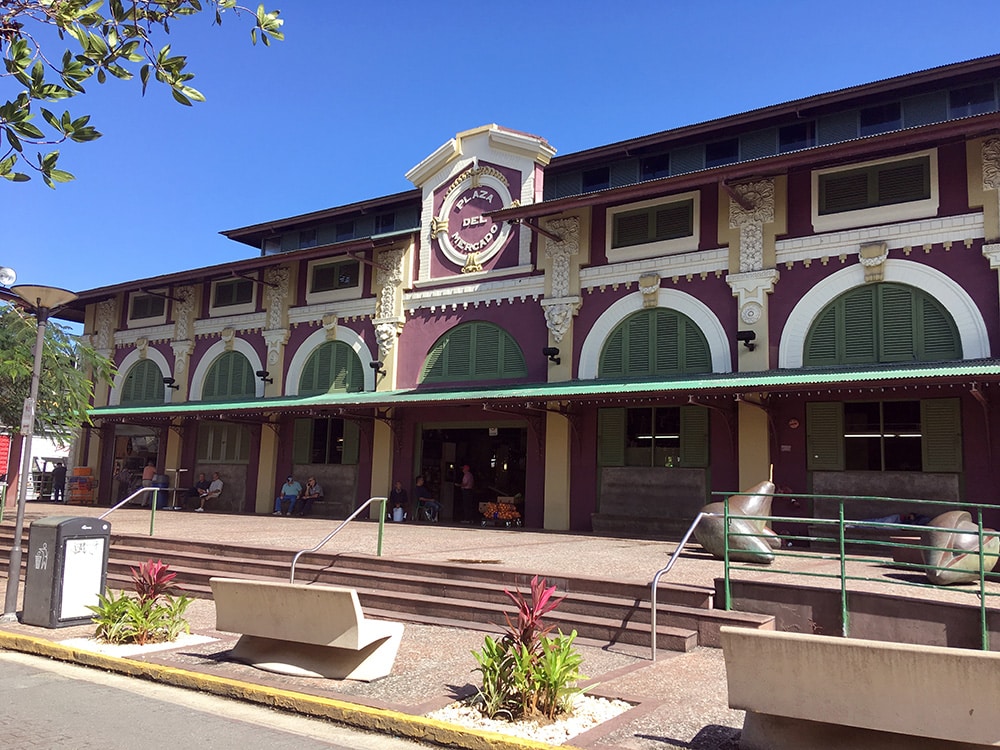
4. Parts of El Yunque National Forest are Open for Visitors, with More Opening All the Time
"I just cried," says forest research ecologist Grizelle Gonzalez, of how El Yunque, the only tropical rainforest in the United States, looked after Hurricane Maria. "All the leaves were completely stripped. There was no green."
To a non-expert eye, El Yunque, which accounts for about 25 percent of Puerto Rico's tourism and is the second most popular attraction in the country next to Old San Juan, seems to be doing pretty well. The forest looked lush and vibrant, but Gonzalez told me to look up. Lower elevations recover faster, but as you look into the mountains the trees are less covered with leaves, with some still completely bare near the top. Plenty of rain in the months since has helped recovery move faster than after previous hurricanes, but the initial devastation was worse.
Immediately after Hurricane Hugo in 1989, tree mortality in the forest was at 10 percent, and 15 years later the mortality is still greater than the recovery. In comparison, mortality is already 20 to 30 percent after Maria. The forest canopy is still open, which is one of the most obvious signs of defoliation, and Gonzalez says it could take 50 to 100 years for the forest to completely recover because there are so many endemic, slow growing species.
"It's important for people to be informed," she says, urging patience during the recovery period. "It's important to have perspective. The Army Corps of Engineers calculated 3.6 million cubic feet of debris from the hurricane, and 60 percent of that was vegetation."
Some park facilities will also need to be rebuilt. This is where tourism helps, and some areas of the park are open. The Angelito Trail, a 0.7-mile walk, is open to the public, as is road 191 to the viewing point for La Coca Falls. More than 100 special use permits have been granted for tour groups to come back to the park, even as much of it remains closed due to landslides and road repair.
"Some closed areas have dozens of landslides," says Forest Supervisor Sharon Wallace. "Everyone is working as fast and as hard as they can."
She estimates full recovery will take more than a year. In the meantime, tourists are encouraged to visit open areas and check the park website and twitter feed, as information is changing all the time.
The forest service is putting together volunteer opportunities for tourists and locals to help with debris removal, painting, giving conservation information to the public, and more. Information about these opportunities will be released on the website as it becomes available. Some cruise lines are also offering volunteer excursions for passengers.
5. The Bioluminescent Bay Glows Lightly, If Not Brightly
Mosquito Bay and its bioluminescent waters have been a huge draw for tourism to the tiny island of Vieques. After the hurricanes, tourism stopped completely, partly because Vieques was harder to reach from San Juan, and partly because the bioluminescence of the bay was destroyed. Residents, who mostly work in hospitality or providing island tours, have suffered. "It has been very, very hard," said De Leon of Jak Water Sports tours. "We need people to come and see all of Puerto Rico, not just San Juan."
She and her husband have been running their business for 18 years, and have seen the bay recover from multiple hurricanes. The warmer the weather the faster the recovery, so they estimate that by the end of April 2018 it should be mostly back to normal. Flagellates, which make the bay glow, can be found around the world, but Mosquito Bay has a concentration of 700,000 per gallon of water, making it the brightest bay in the world. If hurricanes keep coming, this might not always be the case.
"Vieques and the bay are very unique. We want people to know that these places exist, but we cannot control them," says De Leon. "These places are here now, but we don't know if they will be here in the future."
6. Your Beach Vacation Can Still be Beachy
The islands of Vieques and Culebra, home to Puerto Rico's best beaches, were some of the hardest hit areas. That said, the beaches are still beautiful and now is a great time to visit because you'll have lots of sand to yourself. According to Rosa, Culebra has not seen the tourism San Juan has over the last few months, so the beaches are relatively empty compared to peak tourism years. Flamenco Beach, a Blue Flag beach, is cleared and just as gorgeous as ever, as are Media Luna and Navio Beach in Vieques.
Rincon, on the west side of the island, is a popular surf town operating as usual, including numerous spots open for surfing lessons.
7. The Best Way to See the Island is to Rent a Car
Within San Juan, taxis and Ubers are affordable, but if you're planning to visit anywhere outside of the city, renting a car is the most convenient way to travel. Not only can you manage your own time and not have to worry about bus schedules, but you can make beach and food stops along the way. Most major American rental car brands have kiosks inside the airport, and Avis, Enterprise, and Hertz have locations closer to the city center as well.
Because it's part of the United States, all road signage will be familiar, but be careful at intersections outside of San Juan, even just a few miles away. Many street lights were damaged during the hurricanes and are still not working, so some busy intersections are treated more like four-way stops. This can result in a lot of honking and a tense and confusing few minutes, so drive slowly and pay attention. Once on the highway, roads are easy.
8. Patience is Key
Be patient when planning, and stay open to adventure. Much of the country is still running on generators, so showers might not always be as hot as you would like, and air conditioning might not be as cool. An Airbnb where I stayed in San Juan lost water for a few hours, but it was repaired quickly. Cell and Internet service work well in San Juan, but are spotty elsewhere around the island, which can lead to slow response times from tour operators and hotels outside of the city.
Plan your trip ahead of time, be patient and open to things not being 100-percent perfect, and know that your tourism dollars will help Puerto Rico recover faster — meaning your next trip will be even better.
